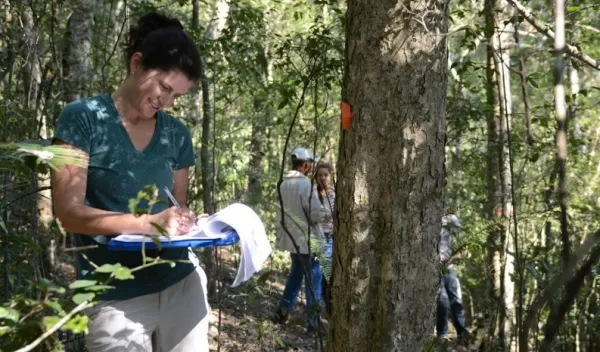
Forests show pathways to a sustainable future
Native forests make up one percent of the landscape in South Africa. But these forests could play key roles in reducing atmospheric carbon and identifying sustainable development practices that can be used globally to counter climate change, according to a Penn State researcher.
"As we think about pathways for reducing atmospheric carbon dioxide concentrations, one of the available approaches is to use the natural world as a sponge," said geographer Erica Smithwick.
The challenge, according to Smithwick, is to use forests to store carbon while also meeting local community resource needs. As trees grow, they absorb and store carbon through photosynthesis. Carbon makes up about half a tree's mass; amounts vary by species.
The results of the study, one of the first to quantify carbon content in Africa, appear in a recent issue of the journal Carbon Management. "As we move toward sustainable development, we need to think about how local communities value and work with the characteristics of these forests," said Smithwick.
According to Antoinette WinklerPrins, a director of NSF's Dynamics of Coupled Natural and Human Systems program, which funded the award, "This research demonstrates the value of engaging local communities in resource conservation. Lessons from the study can be applied in many other settings."


